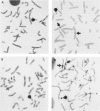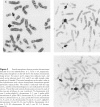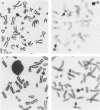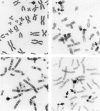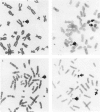Abstract
Ten cases of small ring chromosomes which did not stain with distamycinA/DAPI and did not possess satellite regions associated with nucleolus-organizing regions are described. In situ hybridization with a battery of biotinylated pericentric repeat probes specific either for individual chromosomes or for groups of chromosomes allowed the identification of the chromosomal origin of these marker chromosomes. There was one example of a marker derived from each of chromosomes 1, 3, 6, 14, 16, 18, 20, 13 or 21, and the X, and there were two examples of markers derived from chromosome 12. One case possessed two markers, one derived from chromosome 6, and one derived from the X. The mechanism of generation of ring marker chromosomes is discussed. Five of seven cases who could be phenotypically assessed were abnormal. Three of these--the first with a ring chromosome derived from chromosome 1; the second with two markers, one derived from chromosome 6 and the other from the X chromosome; and the third with a ring chromosome derived from chromosome 20--each possessed distinctive facies. Additional cases with identified rings may allow the delineation of new chromosomal syndromes.
Full text
PDF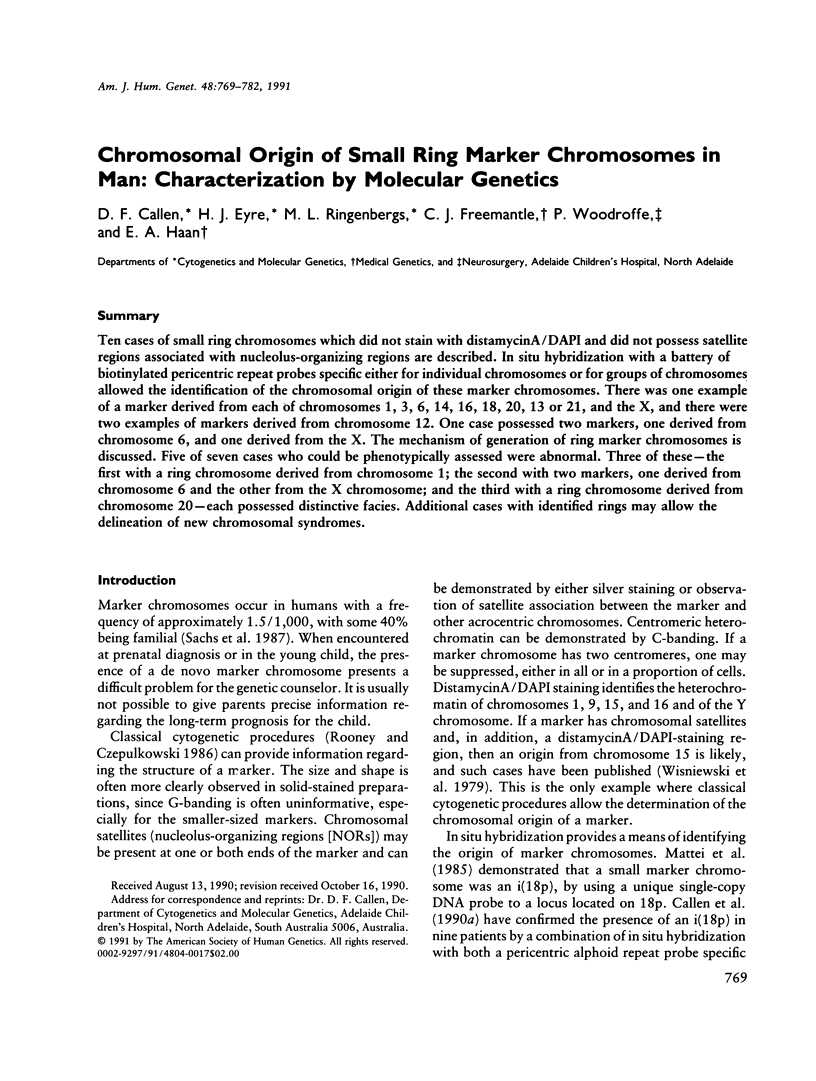
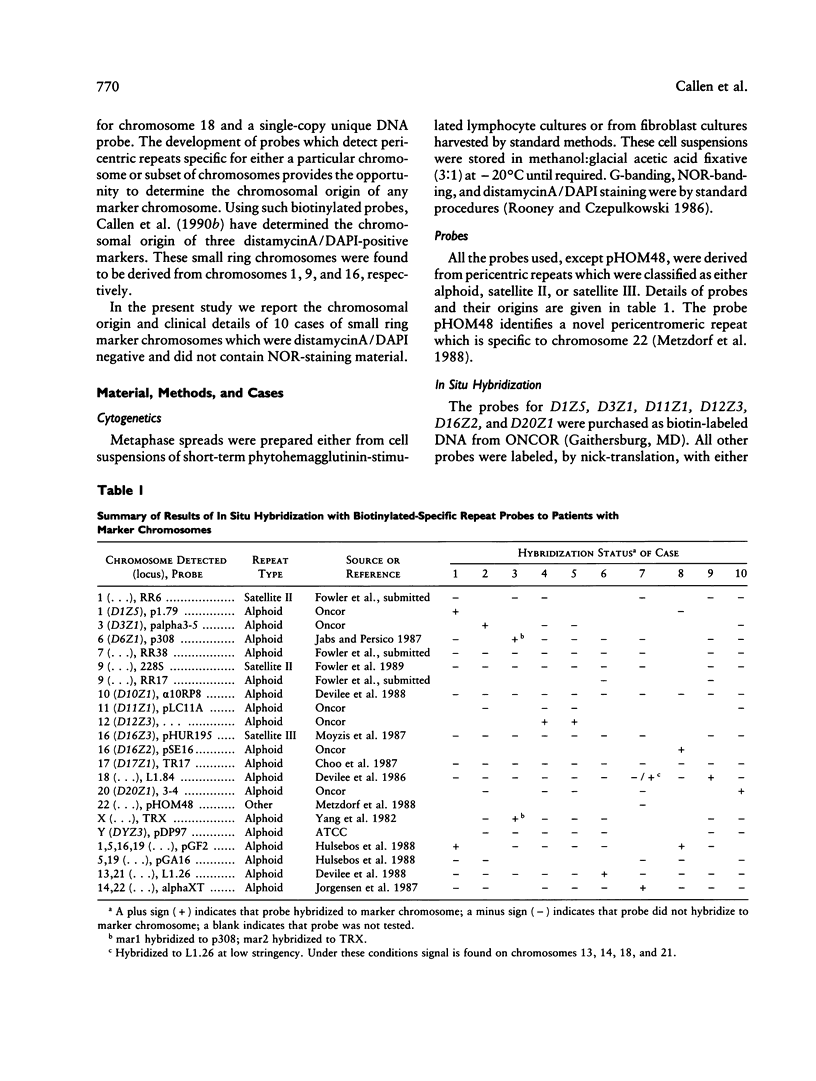
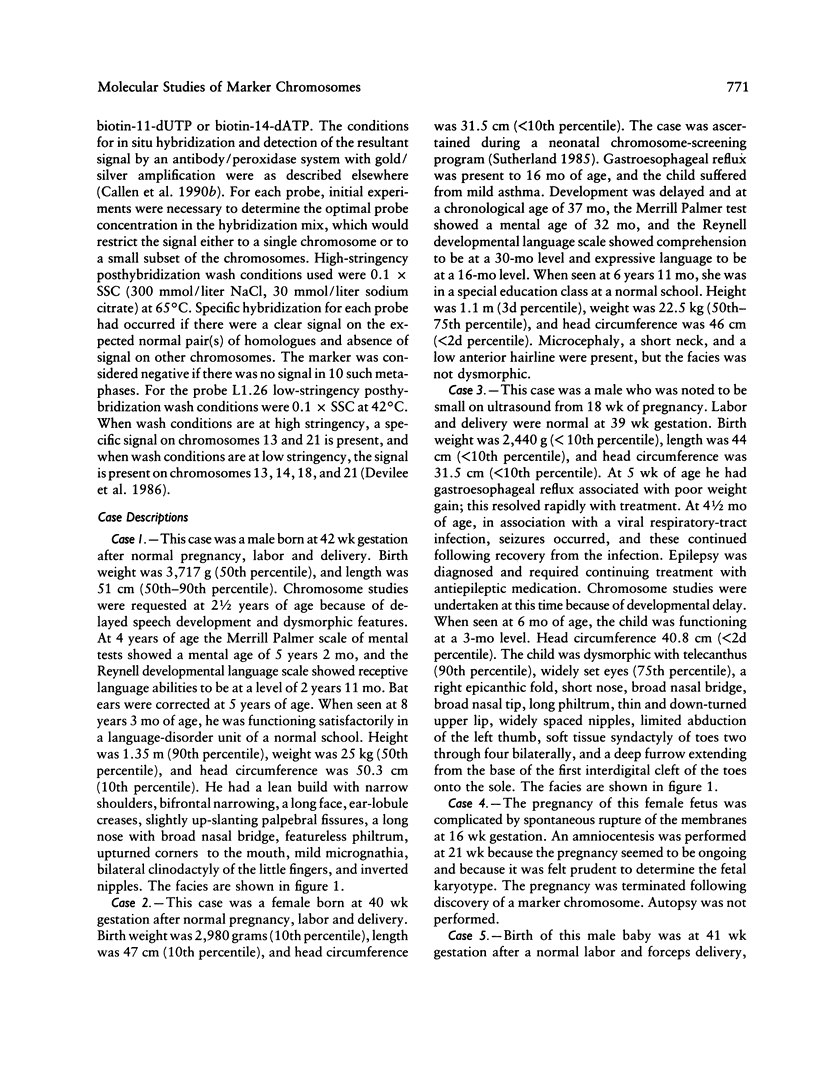
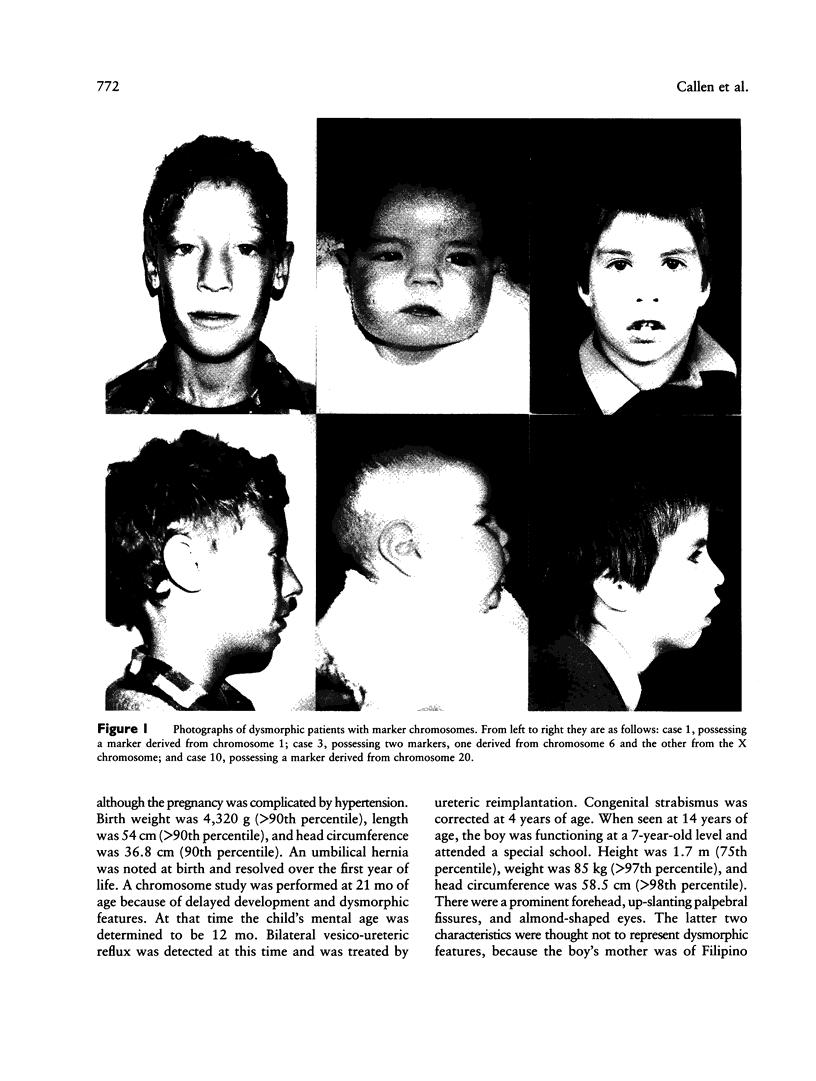
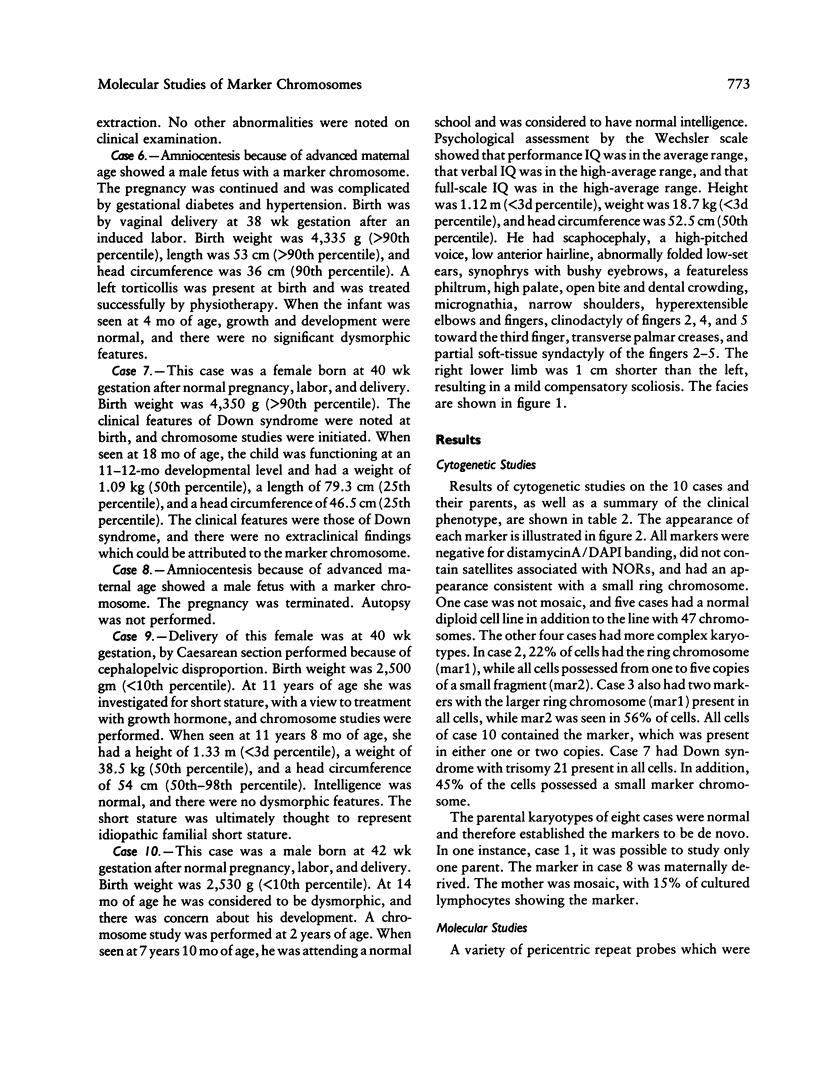
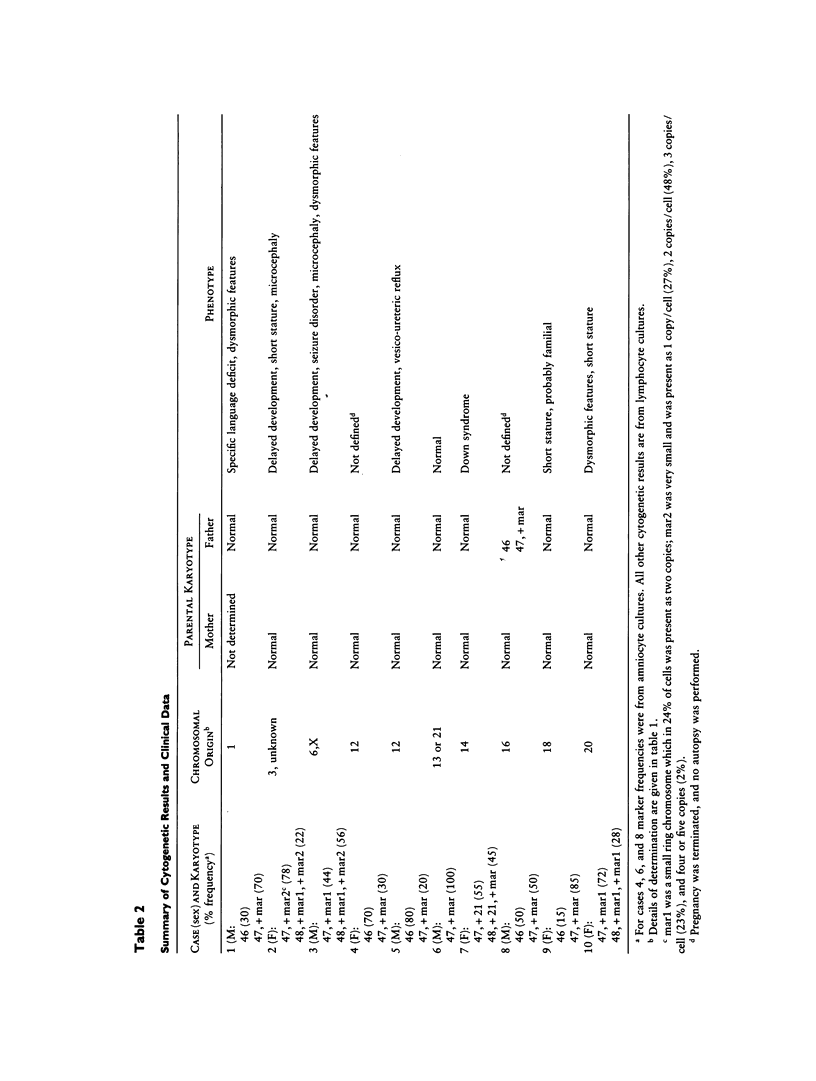
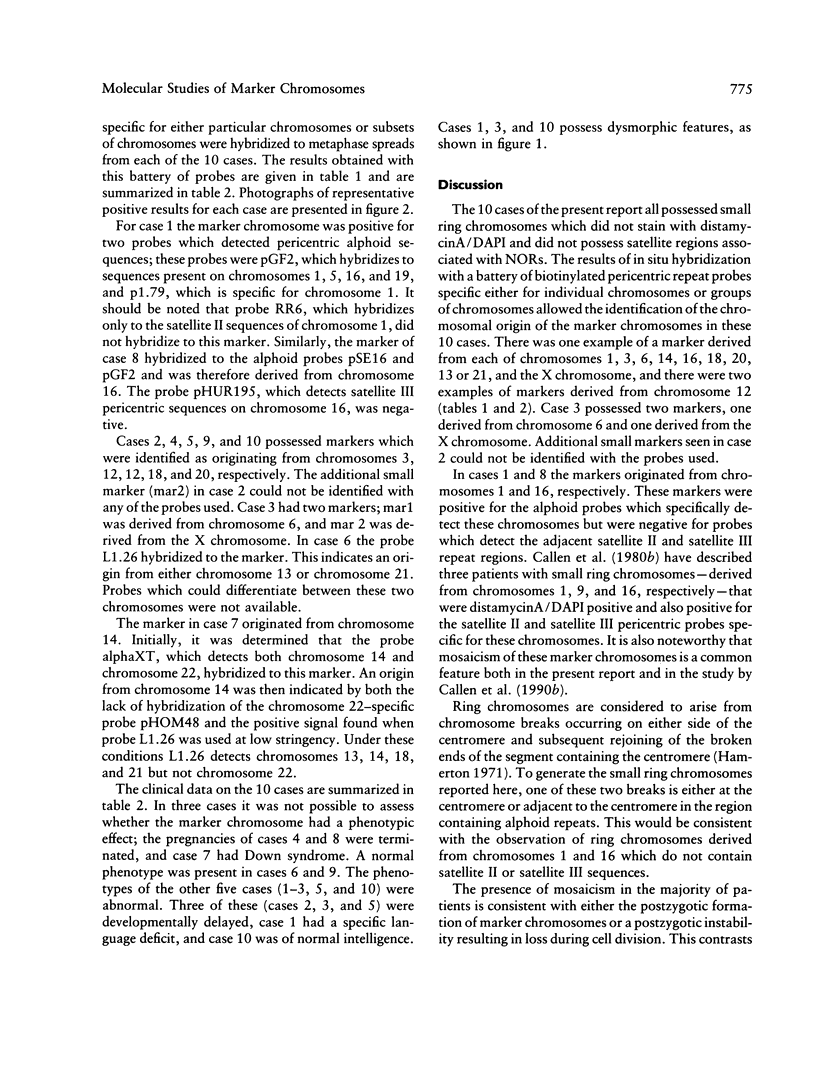
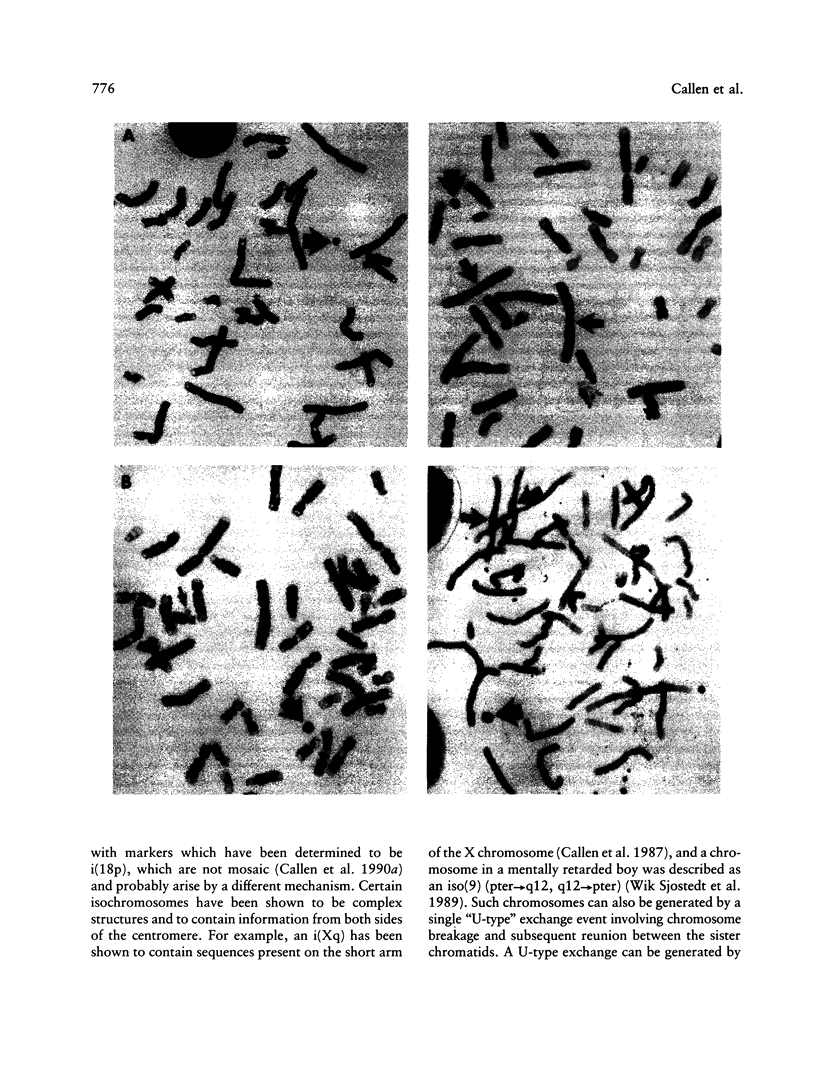
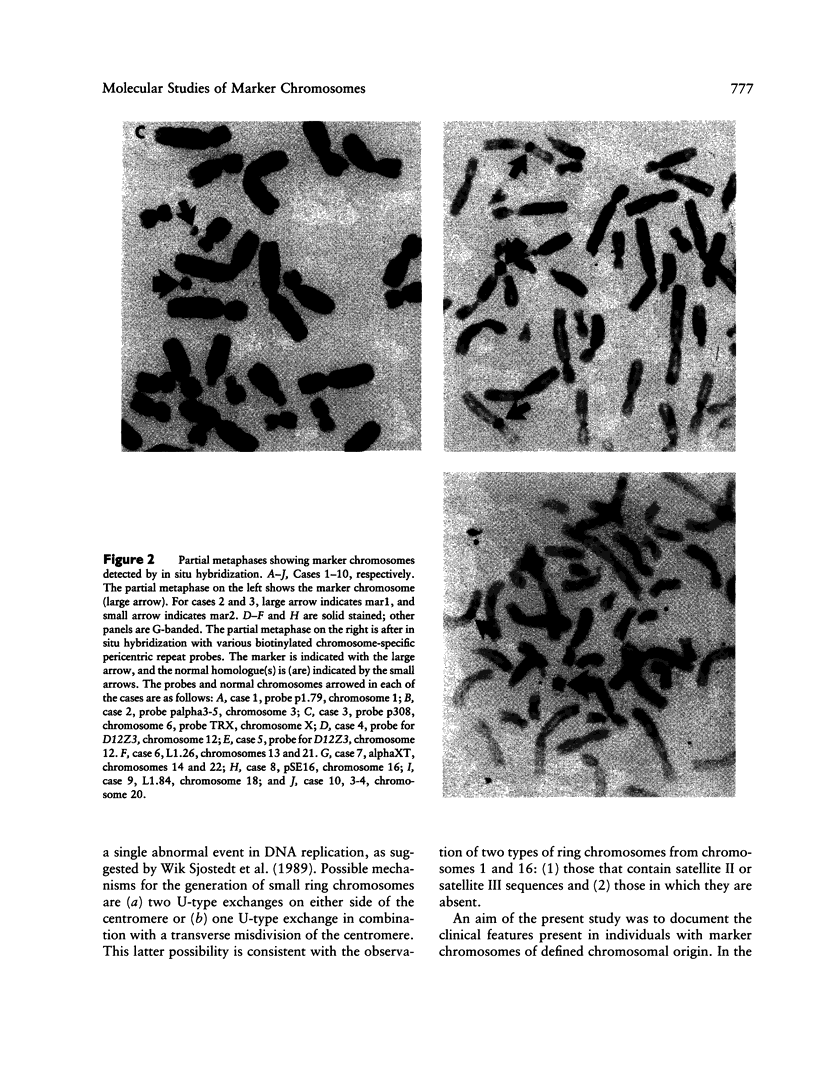
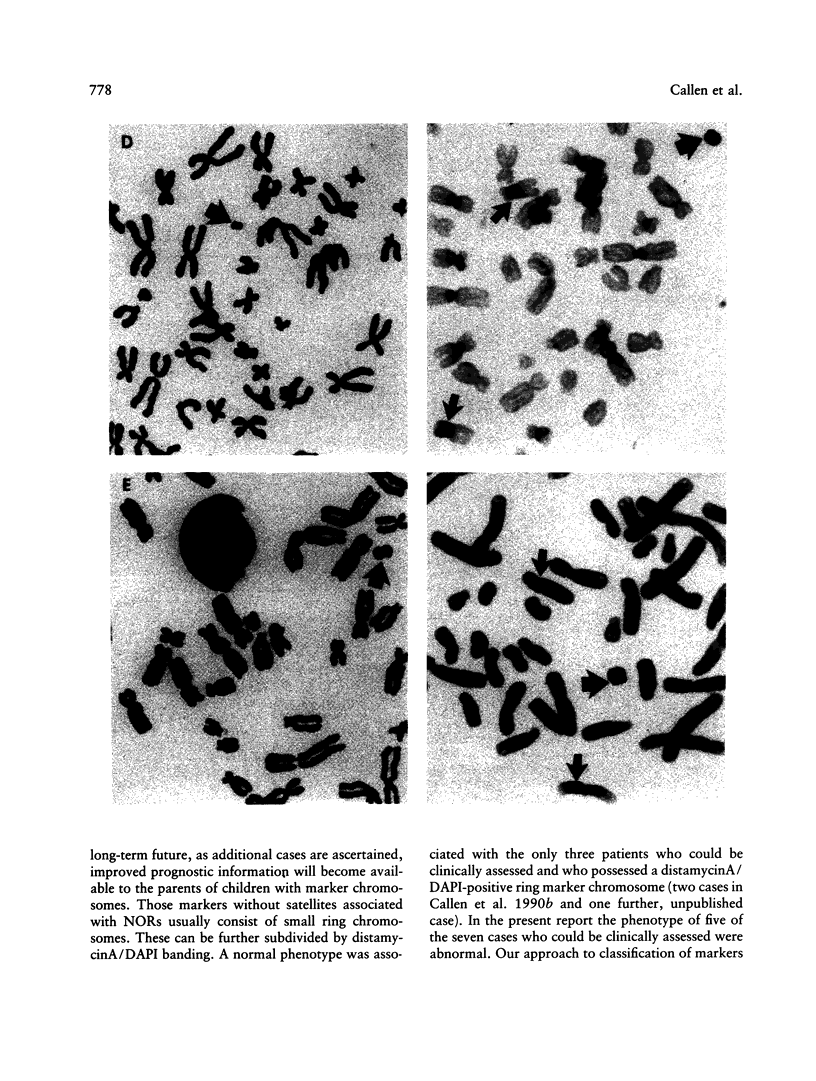
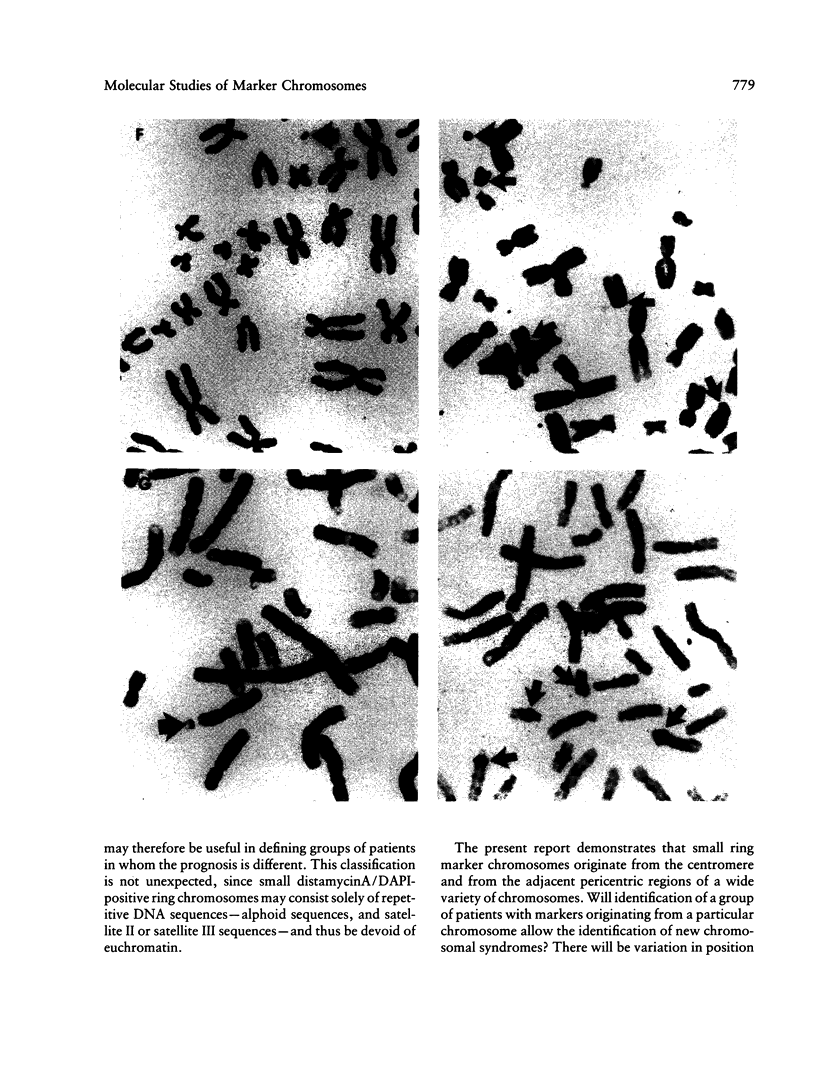
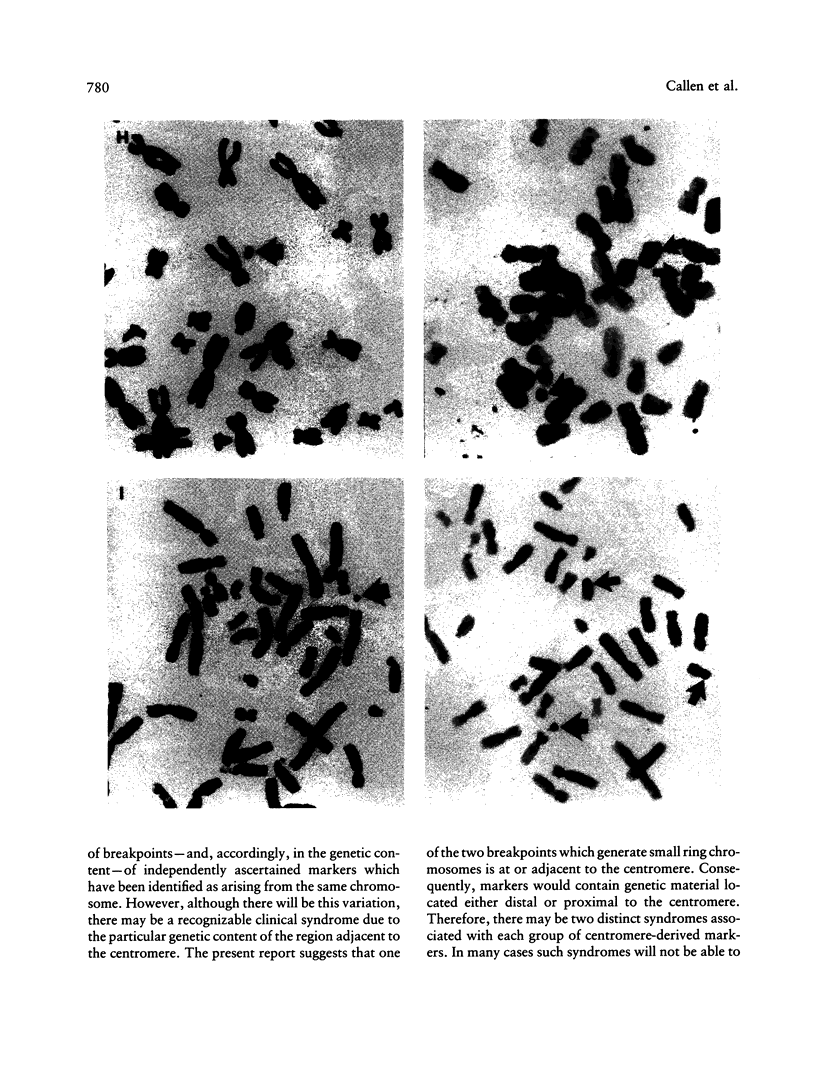
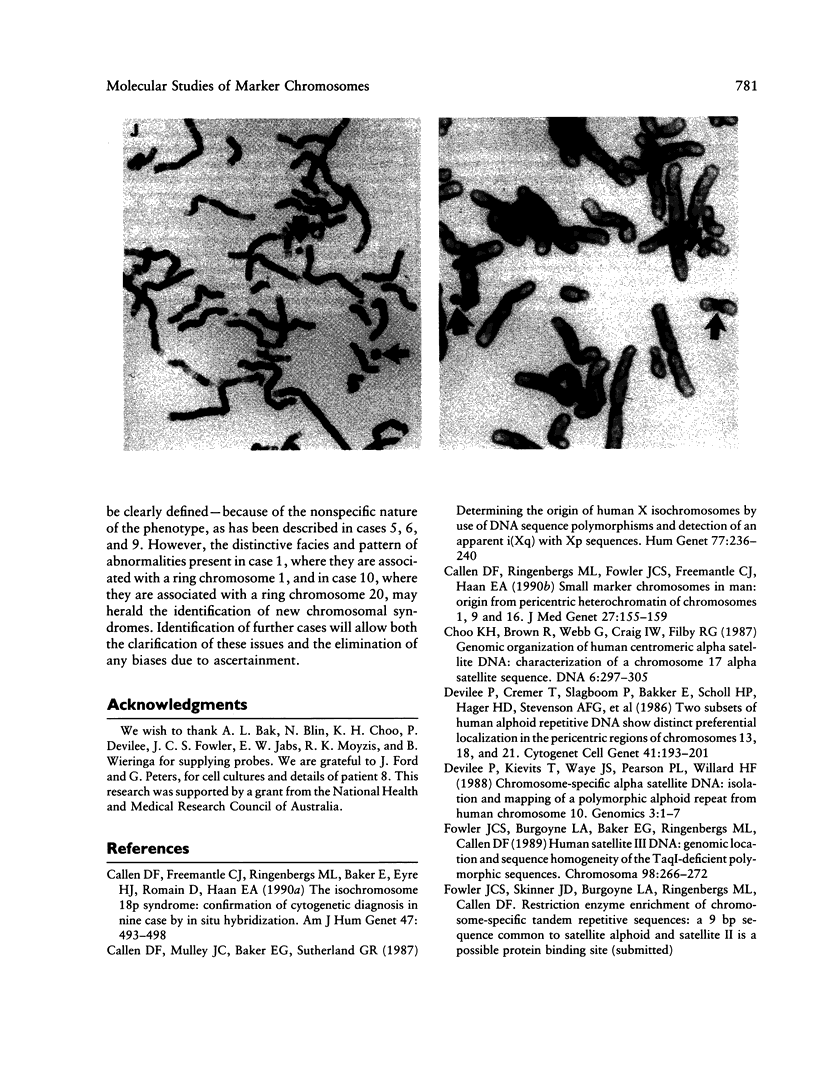
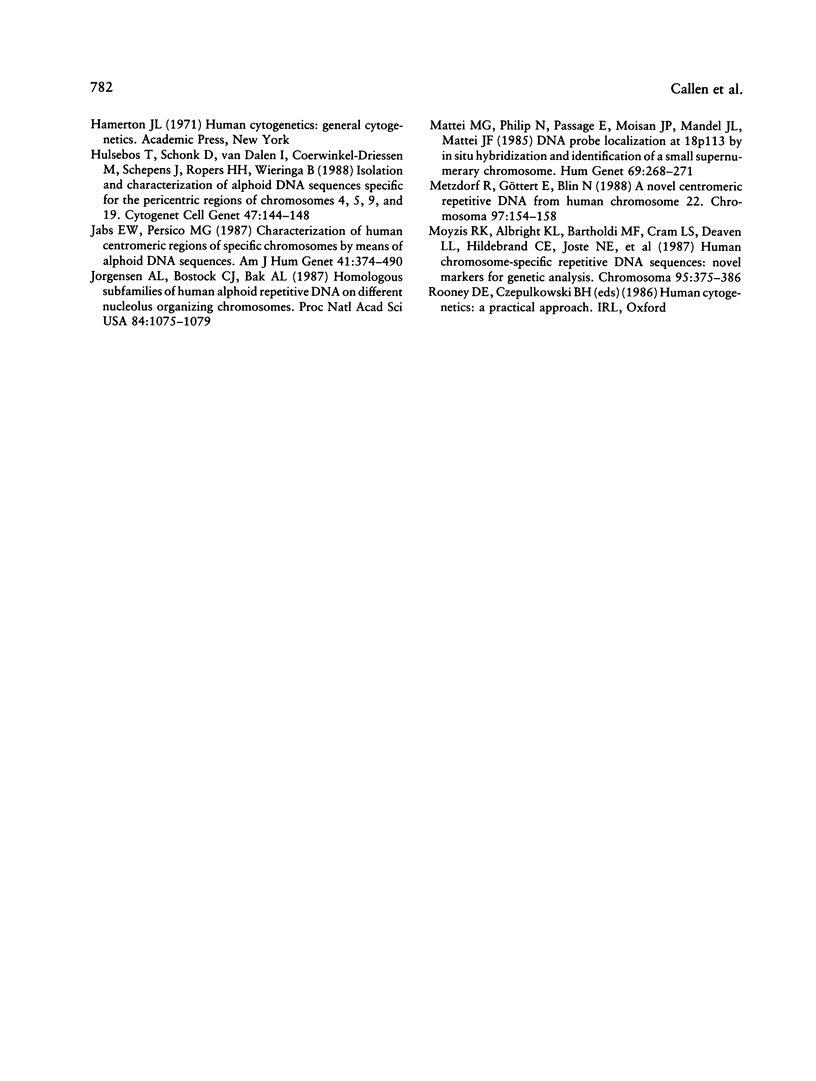
Images in this article
Selected References
These references are in PubMed. This may not be the complete list of references from this article.
- Callen D. F., Freemantle C. J., Ringenbergs M. L., Baker E., Eyre H. J., Romain D., Haan E. A. The isochromosome 18p syndrome: confirmation of cytogenetic diagnosis in nine cases by in situ hybridization. Am J Hum Genet. 1990 Sep;47(3):493–498. [PMC free article] [PubMed] [Google Scholar]
- Callen D. F., Mulley J. C., Baker E. G., Sutherland G. R. Determining the origin of human X isochromosomes by use of DNA sequence polymorphisms and detection of an apparent i(Xq) with Xp sequences. Hum Genet. 1987 Nov;77(3):236–240. doi: 10.1007/BF00284476. [DOI] [PubMed] [Google Scholar]
- Callen D. F., Ringenbergs M. L., Fowler J. C., Freemantle C. J., Haan E. A. Small marker chromosomes in man: origin from pericentric heterochromatin of chromosomes 1, 9, and 16. J Med Genet. 1990 Mar;27(3):155–159. doi: 10.1136/jmg.27.3.155. [DOI] [PMC free article] [PubMed] [Google Scholar]
- Choo K. H., Brown R., Webb G., Craig I. W., Filby R. G. Genomic organization of human centromeric alpha satellite DNA: characterization of a chromosome 17 alpha satellite sequence. DNA. 1987 Aug;6(4):297–305. doi: 10.1089/dna.1987.6.297. [DOI] [PubMed] [Google Scholar]
- Devilee P., Cremer T., Slagboom P., Bakker E., Scholl H. P., Hager H. D., Stevenson A. F., Cornelisse C. J., Pearson P. L. Two subsets of human alphoid repetitive DNA show distinct preferential localization in the pericentric regions of chromosomes 13, 18, and 21. Cytogenet Cell Genet. 1986;41(4):193–201. doi: 10.1159/000132229. [DOI] [PubMed] [Google Scholar]
- Devilee P., Kievits T., Waye J. S., Pearson P. L., Willard H. F. Chromosome-specific alpha satellite DNA: isolation and mapping of a polymorphic alphoid repeat from human chromosome 10. Genomics. 1988 Jul;3(1):1–7. doi: 10.1016/0888-7543(88)90151-6. [DOI] [PubMed] [Google Scholar]
- Fowler J. C., Burgoyne L. A., Baker E. G., Ringenbergs M. L., Callen D. F. Human satellite III DNA: genomic location and sequence homogeneity of the TaqI-deficient polymorphic sequences. Chromosoma. 1989 Oct;98(4):266–272. doi: 10.1007/BF00327312. [DOI] [PubMed] [Google Scholar]
- Hulsebos T., Schonk D., van Dalen I., Coerwinkel-Driessen M., Schepens J., Ropers H. H., Wieringa B. Isolation and characterization of alphoid DNA sequences specific for the pericentric regions of chromosomes 4, 5, 9, and 19. Cytogenet Cell Genet. 1988;47(3):144–148. doi: 10.1159/000132533. [DOI] [PubMed] [Google Scholar]
- Jabs E. W., Persico M. G. Characterization of human centromeric regions of specific chromosomes by means of alphoid DNA sequences. Am J Hum Genet. 1987 Sep;41(3):374–390. [PMC free article] [PubMed] [Google Scholar]
- Jørgensen A. L., Bostock C. J., Bak A. L. Homologous subfamilies of human alphoid repetitive DNA on different nucleolus organizing chromosomes. Proc Natl Acad Sci U S A. 1987 Feb;84(4):1075–1079. doi: 10.1073/pnas.84.4.1075. [DOI] [PMC free article] [PubMed] [Google Scholar]
- Mattei M. G., Philip N., Passage E., Moisan J. P., Mandel J. L., Mattei J. F. DNA probe localization at 18p113 band by in situ hybridization and identification of a small supernumerary chromosome. Hum Genet. 1985;69(3):268–271. doi: 10.1007/BF00293038. [DOI] [PubMed] [Google Scholar]
- Metzdorf R., Göttert E., Blin N. A novel centromeric repetitive DNA from human chromosome 22. Chromosoma. 1988;97(2):154–158. doi: 10.1007/BF00327372. [DOI] [PubMed] [Google Scholar]
- Moyzis R. K., Albright K. L., Bartholdi M. F., Cram L. S., Deaven L. L., Hildebrand C. E., Joste N. E., Longmire J. L., Meyne J., Schwarzacher-Robinson T. Human chromosome-specific repetitive DNA sequences: novel markers for genetic analysis. Chromosoma. 1987;95(6):375–386. doi: 10.1007/BF00333988. [DOI] [PubMed] [Google Scholar]




